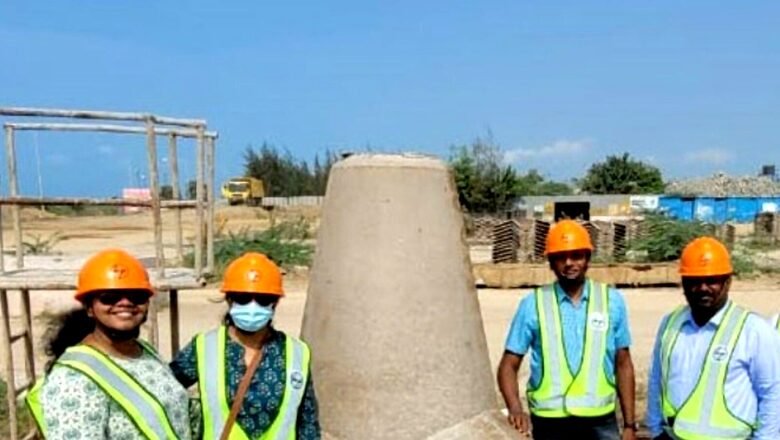
views
In a project supported by the Swiss Agency for Development and Cooperation, a Sustainability Impact Assessment of Limestone Calcined Clay Cement (LC3) shows a reduction of nearly 40 per cent CO2 emissions and 20 per cent lower energy for production as compared to ordinary Portland cement.
At the same time, research done by IIT Madras, IIT Delhi, TARA (Development Alternatives) New Delhi, UCLV (Central University “Marta Abreu” of Las Vilas) in Cuba, and EPFL (Swiss Federal Institute of Technology Lausanne) in Switzerland, supported by Swiss Agency for Development and Cooperation, India has shown that the concrete produced with this cement exhibits excellent strength and durability characteristics.
Low Emissions
Universally, technologists have opined that one of the primary means of reducing the net carbon impact of concrete construction would be the use of less cement clinker in concrete, by the judicious use of by-product materials from mining, agriculture, and industry and minimise wastages through better construction techniques.
Limestone Calcined Clay Cement (LC3) is a blended cement incorporating Portland cement clinker, calcined kaolinitic clay, and limestone, in combination with gypsum. The extent of cement clinker is restricted to only 50 per cent, which implies a major reduction in CO2 emissions since the production of clinker involves the burning of limestone.
The clay used in LC3 is usually a non-ceramic grade raw material extracted from China clay mines including the overburden, while the limestone used in the blend can be from low-grade sources that are not suitable for cement manufacture.
Sustainability impact assessment has clearly demonstrated a reduction of nearly 40 per cent of CO2 emissions, and about 20 per cent lower energy for the production of LC3 as compared to ordinary Portland cement.
Read | IIT Madras Alumni Builds ‘India’s First’ 3D Printed House
LC3 is a general-purpose cement and its production does not require to set up a green field unit. It can be easily integrated into an existing production system. Due to lower energy requirements, it is also around 25% cheaper to produce depending on the availability of clay. With a clear impact on the environment, society, and economy, LC3 is poised to enhance the sustainability of concrete construction.
Speaking about the results of the recently concluded long-term research on LC3, Manu Santhanam, Dean (Industrial Consultancy and Sponsored Research), IIT Madras, said, “Inter-university research spanning across several years and conducted at different scales clearly indicate the superior performance of this cement in coastal areas, which, combined with the major impact on CO2 and energy, can set the standard for producing sustainable concrete. Further, the work at IIT Madras has also resulted in a sustainability framework that can be used to assess the impact of such new cement in construction.”
Elaborating on the need for sustainable construction materials like LC3, Dr. Soumen Maity of TARA New Delhi said, “With the shift of government priority to renewable energy, the availability of fly ash is going to be constrained. The LC3 or Limestone Calcined Clay Cement provides a profitable and technically viable option of reducing the carbon emissions in existing cement production. It can easily be integrated into the existing production system thus reducing the need for high CAPEX. TARA, along with academic Institutions are supporting cement companies to initiate the change to more sustainable cement production.”
Highlighting the importance of collaborative research and its impact, Shashank Bishnoi of IIT Delhi, said, “LC3 is a perfect example of how international collaboration can rapidly bring sustainable technologies from the laboratory to the market. The synergy created by the varied expertise of the team members allowed a much deeper understanding of LC3 than many of the cement that we already use.”
Read all the Latest Education News and Breaking News here














Comments
0 comment